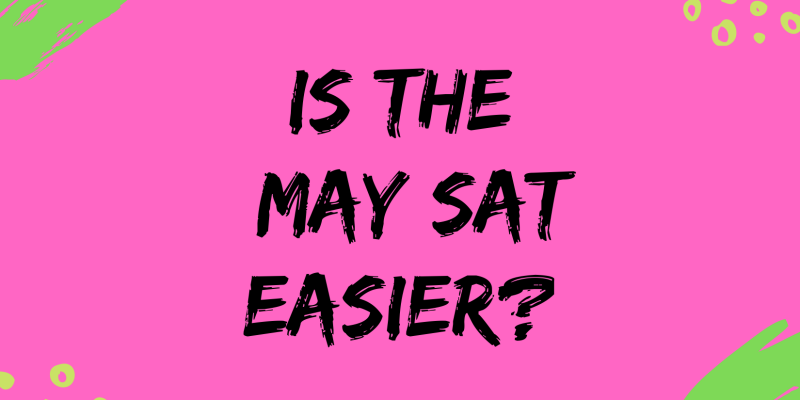
No. There is no test date that is easier than any other test dates. Some exams may have more or less generous curves. But students can not predict which exams will be easier and which exams will be harder.
Equating and Standardization
The College Board sets the “curve” for each SAT before the students even take the exam. The SAT scoring system uses “equating,” which makes sure that the score a student receives on one exam would be the same if that same student took a different SAT test another time. For example, a 600 score on the Reading section of the October SAT is equivalent to a 600 Reading score on the March SAT. It is important to understand the difference between equating and grading on a curve. Grading on a curve means all of the students’ scores may change depending on how their peers performed on the exam. However, with equating, each student’s score will not change no matter how well the other test-takers scored.
Equating ensures that all students are given a fair chance to reach their highest potential score on the exam, regardless of when they take it. It also helps college admission boards evaluate students’ scores, especially if they have taken the SAT multiple times. Noticing an upward trend in scores from a student is impressive, as they know it must be a result of increased studying rather than a difference in that month’s test difficulty. This distinction is only made possible because the College Board utilizes the equating process — a certain score on the SAT always demonstrates a specific level of skill, no matter when each exam took place.
Since the College Board does not set a grading curve after each student’s score has been calculated, there is no singular, ideal time to take the test. However, students should evaluate their own schedules and timelines in order to prepare for the SAT on their own time. Planning ahead and personalizing a SAT-studying plan can help students find their personal best time to take the SAT.
Benefits of Taking the SAT Multiple Times
Students are likely to see a large and considerable increase in their score between the first and second test. Why? The SAT is largely formulaic, meaning there are certain patterns that students can recognize and prepare for. Beyond naturally picking up on some of the bigger patterns in each SAT, students can also use their experience from their first exam when they are studying for their next attempt. Taking the SAT for the first time can feel unfamiliar and daunting, and many students also face test day anxiety and feel nervous when they sit for the test for the first time. However, like any task, practice makes perfect and students can benefit from online SAT Prep. If a student has taken the exam before, he or she is likely to understand and be more familiar with the overall process, which could lessen nerves and improve performance. For example students may better understand what to bring to the SAT the second time around.
SoFlo strongly encourages taking the SAT at least twice in order to account for the students’ increased familiarity with the exam; we also recommend taking the test at least three times in order to ensure that the student has scored his or her highest score possible. Taking the SAT three times also means that students can superscore their best sections. Superscoring means that the highest score from each section, regardless of which attempt they belong to, are combined into one superscore. Students will then be able to send the maximum composite score to a university in their application (if the college allows for superscoring).
How is the SAT Scored?
On the SAT, students gain one point for every question they answer correctly. All SAT test-takers should note there is no penalty for blank or incorrect answers, meaning even if they run out of time or are unsure about an answer, they should guess. Guessing gives students a 25% chance of choosing the correct answer, which is more likely to yield a higher score than if they left anything blank.
All of the points earned from the correct answers are combined to form a “raw score.” For example, if a student answered 48 out of 54 questions correctly on the Math section, that student’s raw score would be 48. The process of converting these raw scores into more recognizable scores (on a 800 scale) varies slightly for the Reading/Writing sections and the Math sections. In the Math section, the raw score is scaled into a Math section score with the equating and conversion process. In the Reading and Writing sections, the raw scores are changed into test scores on a scale of 10-40. Then, the College Board adds those test scores together and multiplies that number by 10 to reach a score on the typical 800 point scale. The SAT’s scoring system ensures that all total scores will fall between 400 and 1600, with 800 maximum points in the two sections.
The College Board’s equating system changes the score a student might receive on different tests, even with the same raw score. Some SAT tests have higher difficulty levels, meaning the scores are scaled to a higher level to account for the difficulty. Since the SAT does not follow a singular “curve” or equating process for each exam, it is impossible to know what a certain exam’s scaling system will look like. However, taking practice exams with the score conversion charts in the answer section can help students gain an understanding of how the conversion system works and how it affects their scores when one test is harder than another. Furthermore, students can experiment online with several test curve websites, on which they can input their raw score and compare how different exams would have applied the equating system to them. To find these websites for the appropriate test years in order to gain an estimation, students should search “SAT score calculator.”
Finding the Best Time to Take the SAT
Students should decide when to take the SAT based on their own personal workload and schedules. Juniors with a big AP course load at school should begin studying in the fall of junior year in order to get ahead, as AP exams at the end of the year can greatly affect the amount of time they can dedicate towards studying for the SAT. In addition, taking the SAT and taking AP tests can both become extremely stressful individually, so students should try to divide and conquer as much as possible so they don’t feel overwhelmed towards the end of the year. Juniors who feel comfortable with their AP load and are taking fewer AP courses can begin studying in the spring (March, May, and June). Students should consider taking the SAT as soon as they feel comfortable and confident with their level of SAT knowledge, as it can help inform their decisions to take the exam again or help them find new, targeted methods of studying.
Seniors should begin studying immediately and take the test before their colleges require their test scores. Since the deadline to apply under regular decision is January 1, students must finish all of their SAT testing by the December date in order to ensure their scores are sent on time. Some schools have different policies regarding how students can send in their SAT scores, so if absolutely necessary, sending in a new SAT score by a later time may be feasible. However, students should take care to double check what a school’s policy for SAT scores looks like before deciding to wait and take the SAT after December. Students should always seek permission from the admissions board if they wish to send in new scores after the deadline.
Students looking to take the SAT during their junior or senior years should take the test at their earliest possible convenience without missing out on valuable studying time. Taking the SAT as soon as possible has many benefits. Students can check out their past College Board SAT score reports in order to determine which areas of the material they should focus on in order to improve their next test score. Furthermore, if a student reaches their goal score early on, it can reduce stress and leave more time to focus on school or college applications. The more test preparation, the better, but students in their senior year should not overly stress. Targeted practice can help improve a test score, especially if they work with a SAT tutor who understands the exam and the best methods to reach a student’s highest potential.
About the Author: Emily Moon is an expert SAT & ACT tutor at SoFlo Tutors. Emily studies Communications and Consumer Psychology at the University of Pennsylvania. She was a National Merit Scholar in high school, scored a 1580 on the SAT, and scored an 800 on the SAT Literature Subject Test. She keeps busy writing music articles for 34th Street Magazine or writing social media copy for the Institute of Contemporary Art. In her free time, she enjoys listening to music, painting, or playing the guitar.










